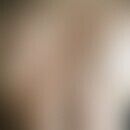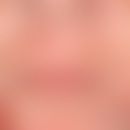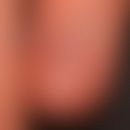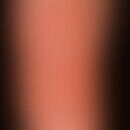Synonym(s)
Physical Urticaria; urticaria
DefinitionThis section has been translated automatically.
Urticaria triggered by physical stimuli (friction, pressure, cold, heat, light), in the vast majority of cases acquired urticaria, whereby a distinction is made between a contact and a reflex type. The trigger mechanism is usually known to the patient. Physical urticaria shows a significantly lower spontaneous remission rate than idiopathic urticaria.
ClassificationThis section has been translated automatically.
Depending on the type of physical stimulus, a distinction is made between mechanically triggered and thermally and electromagnetically induced clinical pictures:
- Mechanical:
- Thermal:
- Electromagnetic waves:
You might also be interested in
Occurrence/EpidemiologyThis section has been translated automatically.
The share of physical urticaria in the total of chronic urticaria can only be estimated. It is estimated at 15-25%. Different forms of urticaria are often combined, e.g. the chronic idiopathic type with physical urticaria.
ClinicThis section has been translated automatically.
Strongly itchy wheals of varying persistence and strength. Red spots (erythema) as well as raised, sharply defined, palpable, solitary or confluent, itchy, whitish to red wheals of varying size appear. Deep tissue swellings are also not uncommon. In the contact type, the skin symptoms are only localised at the site of the irritation. In the reflex type, they can also occur as a remote reaction and are accompanied by symptoms such as hypotension, tachycardia and dysesthesia of the acra.
DiagnosisThis section has been translated automatically.
- Pressure test: Defined weights act on the back or arm for a certain time. Reading: immediately, after 20 minutes, 1, 6 and 24 hours.
- Cold test: put ice cubes on the skin (arm) for 20 seconds, reading see above.
- Heat test: Place an object with a temperature of about 45 °C on the skin (arm) for 20 seconds. Reading: See above, see below light staircase (see MED below).
- Cholinergic urticaria: Test with hot partial or arm bath (40 to max. 45 °C), physical strain to trigger the urticaria. Carbachol test (7.5 μm i.c., forearm flexion page).
General therapyThis section has been translated automatically.
The treatment depends on the exact diagnosis, see also urticaria, chronic. Avoid triggering cause. In most forms of physical urticaria (including cholinergic urticaria and contact urticaria) the refractory phase (exhaustion phase of the mast cells) can be used to induce tolerance. Patients can be instructed to expose themselves to regular stimuli that do not cause severe symptoms. Until the presumed new synthesis of histamine, they are thus free of symptoms on renewed exposure to stimuli. Systemic glucocorticoids are effective, but are not a solution due to the chronicity of the disease. Otherwise, see the respective clinical picture below.
Internal therapyThis section has been translated automatically.
Omalizumab: A literature review included 43 studies, case studies, case reports and analyses on the use of amalizumab in different countries. Subtypes of chronically inducible urticaria (symptomatic dermographism, cold, heat, sun, water and pressure urticaria, vibratory angioedema, cholinergic urticaria and contact urticaria). This resulted in clear therapy effects with the strongest evidence in symptomatic dermographism, cold urticaria, sun urticaria (Maurer M et al. 2018)
LiteratureThis section has been translated automatically.
- Butcher M, grave J (2004) Physical urticaria. dermatologist 55: 344-349
- Humphreys F, Hunter JA (1998) The characteristics of urticaria in 390 patients. Br J Dermatol 138: 635-638
- Maurer M et al (2018) Omalizumab treatment in patients with chronic inducible urticaria: A systematicreview
of published evidence. J Allergy Clin Immunol 141:638-649.
Incoming links (7)
Chronic inducible urticaria; Occupational dermatoses; Pressure urticaria; Thermal urticaria; Urticaria aquagene; Urticaria cholinergic; Urticaria factitia;Outgoing links (14)
Angioedema, vibratory; Cold urticaria; Contact urticaria; Dermographism, urticarial; Glucocorticosteroids; Light urticaria; Med; Omalizumab; Pressure urticaria; Radiolucent urticaria; ... Show allDisclaimer
Please ask your physician for a reliable diagnosis. This website is only meant as a reference.




